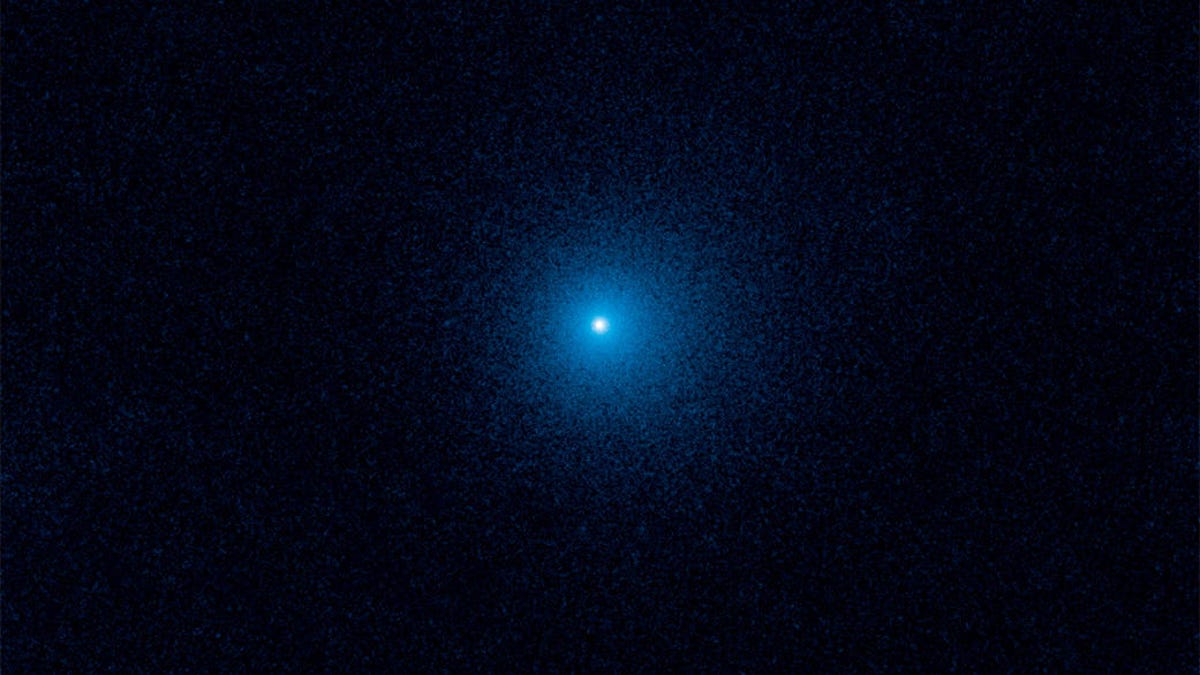A giant comet spotted in 2017 is still heading toward Earth
Comet K2 won't arrive until 2022, but it already has the attention of astronomers.

Hubble caught sight of comet K2 when it was out between the orbits of Saturn and Uranus.
It's been a busy but somewhat disappointing period for comet-watching, with Comet Atlas and Comet Swan flying through the inner solar system without putting on the spectacular show many were hoping for.
But some astronomers are keeping an eye on a giant comet that's making its way toward us right now for a visit in 2022.
Comet C/2017 K2 was first spotted in 2017 and photographed by the Hubble Space Telescope. It made headlines at the time, as it was the farthest from the sun a comet had ever been spotted sporting its fancy tail.
"These observations represent the earliest signs of activity ever seen from a comet entering the solar system's planetary zone for the first time," NASA noted in a statement at the time.
A giant comet is coming!.
— Con Stoitsis (@vivstoitsis) May 26, 2020
Comet C/2017 K2!
At perihelion at the end of December 2022. It’s almost at 10UA from the Sun yet it is very active and bright!
The observation was made on the night of 23-24 May. pic.twitter.com/t1rcXFFsxS
Three years later, Comet K2 is still heading our direction, on its way to a December 2022 close encounter with the sun. Astronomer Con Stoitsis observed the comet on May 23 and 24, and described it as "giant" and "very active and bright" despite still being almost 930 million miles (1.5 billion kilometers) from the sun.
Some comparisons have already been made with the giant comet Hale-Bopp, which flew by in 1997 and is considered one of the brightest and most widely observed comets of modern times. However, it's still too early to tell if K2 truly is of a similar size or if it will shine as bright as Hale-Bopp.
Regardless, scientists will be studying the space snowball with increasing interest and painting a more complete picture of our impending visitor over the coming months.

